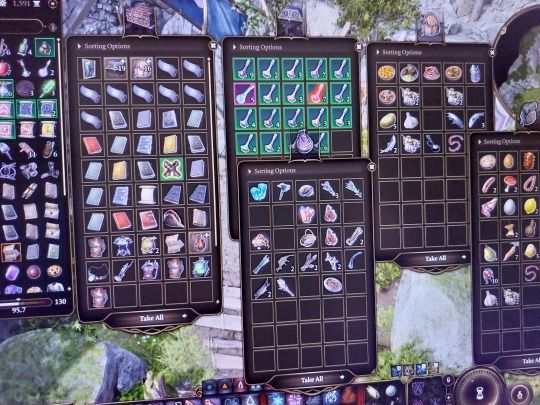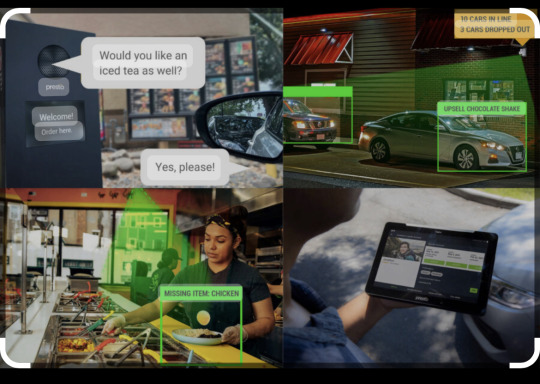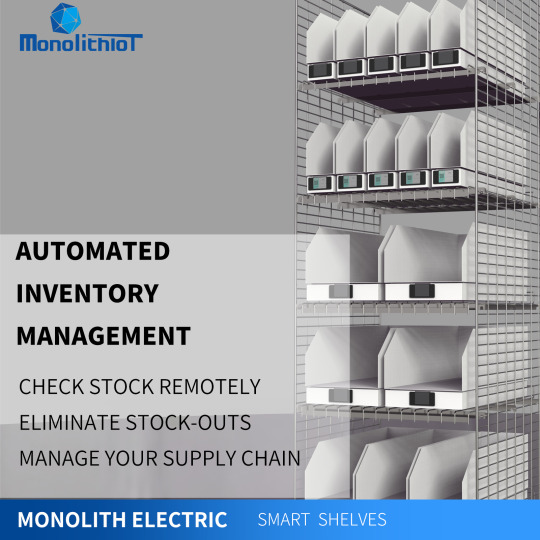#inventory management
Text

Look, these are gonna be very important later on when he goes on a date with that big dude.
#legend of zelda#loz#link#inventory management#now thats a tag#the compression on this is making me cry but whatever#hes gonna kill so many doctors with those
821 notes
·
View notes
Text


Inventory management....boxes inside boxes....but stuff doesn't always automatically go inside its assigned folder or it could be inside another character's inventory under the assigned folder.
why can't we choose to show full party inventory???? Like in the last few patches in early access? That was so useful.😭
#baldur's gate 3#bg3#video games#my posts#my post#about me#My posts#bg3 mine#inventory management#Sigh#it's gonna get so bad...#hide the pain harold#meme#reaction image#Video games
25 notes
·
View notes
Text
No one:
No one at all:
Game Developers: Yknow what bitches love? bitches love inventory management.
——
TFW 90% of your gameplay is trying to find the right fucking box
#gaming#game dev#inventory#inventory management#fuck this shit#I blame Stardew valley#crafting games#farming games#stardew#harvest moon#terraria#minecraft
52 notes
·
View notes
Text
Hell yeah!
Inventory management!!!!
*epic guitar solo*
*proceeds to sort through items slowly and carefully*

*WHY CAAAAAN’T YOU CLOSE YOUR EYES WITH ME NOOOOOOOOOOOOW!!!!!!!!!*

*mirrors lie twice*
*WHY CAN’T YOU CLOSE YOUR EYES WITH MEEEEEEEE NOOOOOOOOOOOOW!!!!!!!*
What the hell am I DOING?!
#dougie rambles#personal stuff#my poor attempt at a joke#what#no context#this sounded funnier in my head#shitpost#weapons grade shitpost#gifs#the shining#gaming#inventory management#item management#resident evil 7#resident evil#capcom#unreality#sort of#mirrors lie twice#mister manticore#analog horror#monument monster#monument mythos#tangentially#tw blood#songs that don’t exist#music that doesn’t exist
2 notes
·
View notes
Text
How ERP Software Can Help Engineering Companies with Inventory Management
In the engineering industry, inventory management is an essential function that helps businesses keep track of their resources and materials. However, manual inventory management can be a time-consuming and error-prone process. This is where an ERP software solution can help.
Manufacturing ERP software in India is designed to streamline inventory management, along with other critical business processes, to enhance productivity, efficiency, and profitability. In this blog, we will discuss how ERP software can help engineering companies with inventory management and how ERP solution providers in India can assist in implementing such a solution.

Improved Planning and Forecasting
With an ERP software solution, engineering companies can access real-time inventory data that helps them plan their production process better. This includes tracking raw materials, components, and finished products, as well as anticipating future demand for their products. By having access to up-to-date inventory information, businesses can make informed decisions about when to order new supplies or reduce production to avoid overstocking.
Automated Inventory Tracking
ERP software company in India can help engineering businesses automate their inventory tracking, reducing the risk of human errors and providing a more accurate picture of their inventory levels. With automated inventory tracking, businesses can quickly identify any discrepancies in their inventory levels, track inventory movement, and reduce the risk of stockouts.
Optimized Warehouse Management
Warehouse management is an integral part of inventory management, and an ERP software solution can help businesses streamline their warehouse operations. With real-time inventory data, businesses can optimize their storage space, reduce waste, and ensure that the right products are in the right place at the right time. This can help reduce the time and cost associated with managing inventory.
Reduced Costs
By improving inventory management, businesses can reduce their overall costs. By optimizing inventory levels, companies can reduce the amount of capital tied up in inventory, minimize the risk of overstocking or stockouts, and avoid waste. In addition, automated inventory tracking and optimized warehouse management can help reduce labor costs and increase productivity.
ERP Solution Providers in India
Implementing an ERP software solution can be a complex process, but there are ERP solution providers in India that can help businesses through the process. These providers offer a range of services, from consultation to implementation and ongoing support. They can help businesses select the right ERP software solution for their needs, customize the software to meet their specific requirements, and provide training and support to ensure a smooth transition.

In conclusion, manufacturing ERP software in India can help engineering companies streamline their inventory management processes and reduce costs. With real-time inventory data, automated inventory tracking, and optimized warehouse management, businesses can improve their planning and forecasting, reduce labor costs, and increase productivity. ERP solution providers in India can help businesses implement and maintain an ERP software solution, providing consultation, implementation, and ongoing support.
#Inventory management#ERP software Companies in India#ERP software providers in India#ERP for manufacturing company in India#ERP software in India#Manufacturing ERP software in India#ERP software company in India#ERP solution providers in India#manufacturer
7 notes
·
View notes
Text
Technology in Hospitality
Technology related to software has had the most prominent technology when it come to the development of Drive- thru window. Advance ordering system with great communication devices like LED screens and earphones make the drive thru experience more faster and efficient.

2) Hi there,
I can understand your concern about surveillance in dinning areas. I want to take a moment to explain why we to install cameras in dinning areas.
It help us to keep an eye on any unusual activity and to investigate any theft case.
We strictly use the surveillance recordings for investigation purposes only.

3) Advancement in technology helping to reduce the labour cost. Automation technology helps to manage payrolls of employees by itself.
Data technology provides data collection and analyzing tools which helps in HR management.
Ways it will influence job seekers and employers are:- flexibility in work schedule and virtual meetings.

4) In upcoming years the tasks like menu planning, inventory management and customer feedback analysis will performed by softwares.
AI technologies will used for many tasks like serving and taking orders.

3 notes
·
View notes
Text
Taking Stock: The Essentials of Restaurant Inventory Management Software

In the realm of gastronomy, where patrons demand nothing less than top-tier cuisine and impeccable service, restaurant proprietors and administrators face the arduous task of maintaining a well-stocked kitchen, minimizing wastefulness, and effectively managing expenditures. This is precisely where the realm of restaurant inventory management software comes into play. In this extensive discourse, we embark on a profound exploration of the fundamentals surrounding restaurant inventory management software, accentuating its merits, pivotal attributes, and the transformative potential it harbors for restaurant operations.
What Constitutes Restaurant Inventory Management Software?
Restaurant inventory management software stands as a formidable tool meticulously engineered to empower restaurant proprietors and supervisors in their relentless pursuit of methodically overseeing, tracking, and mastering their inventory infrastructure. It proffers a digital remedy to the timeless quandaries tied to the meticulous surveillance of ingredients, provisions, and equipment. This software forms the bedrock of a meticulously organized culinary haven, perpetually ensuring the harmonious rhythm of all operations.
The Merits of Adhering to Inventory Management Software
Meticulous Expenditure Oversight
Amongst the most noteworthy advantages attributed to restaurant inventory management software is its capacity to exercise judicious expenditure control. Through precise monitoring of inventory levels and the vigilant observation of consumption patterns, avenues for curbing extravagance and trimming expenses are unveiled. The ramifications of this could be profound, bearing the potential to elevate profitability to unprecedented heights.
Augmented Precision
Manual inventory management bears the inherent vulnerability of yielding inaccuracies, a potential source of stock-related discrepancies. The advent of inventory management software dispels this risk through the mechanization of the entire process. It endows you with real-time data, perpetually ensuring the pristine precision of your inventory records.
Amplified Efficiency
Efficiency is the quintessential cornerstone upon which any prosperous restaurant establishment is erected. Inventory management software expedites the ordering procedures by triggering alerts when inventory dwindles perilously low. This precludes the peril of overstocking or the harrowing scenario of crucial ingredients vanishing from your inventory, safeguarding the seamless operation of your kitchen.
The Pivotal Attributes of Restaurant Inventory Management Software
To surge past competitors within the fiercely competitive restaurant landscape, a keen comprehension of the cardinal attributes rendering inventory management software indispensable is imperative:
Inventory Surveillance - At its core, inventory management software is the sentinel of your inventory realm. It furnishes you with the means to vigilantly monitor the quantity and utilization of each constituent in real time. A mere glance suffices to discern which items teeter on the precipice of depletion, necessitating prompt replenishment.
Astute Supplier Management - Effective supplier management assumes a pivotal role in the flourishing of any dining establishment. Inventory management software empowers you to maintain meticulous records of your suppliers, encompassing their contact details and pricing specifics. Some advanced iterations even facilitate the automation of reordering contingent on predetermined criteria.
Integration with Culinary Repertoire - Seamless integration with your restaurant's menu constitutes a game-changing facet. It ensures that you perpetually possess the necessary ingredients to conjure each culinary masterpiece. Additionally, it provides insights into the most financially rewarding items on your menu.
The Prudent Selection of Restaurant Inventory Management Software
The task of selecting the apt software solution for your dining establishment is a decision of paramount importance, one that warrants meticulous deliberation. Here are some sagacious pointers to steer you toward an informed decision:
Discern Your Precise Requisites
Before embarking on your quest, undertake a comprehensive assessment of your restaurant's unique requirements. Contemplate factors such as the scale of your establishment, the intricacies of your culinary repertoire, and your fiscal constraints. Such self-awareness will function as the compass guiding you through your selection process.
2. Embrace a User-Friendly Interface
Opt for software that boasts an intuitive interface. Your staff should be able to acclimate themselves to it effortlessly, sans the need for extensive training endeavors. A user-friendly interface will not only conserve time but also stave off the specter of inadvertent errors.
3. Seamless Integration Capabilities
In instances where you are already availing yourself of other restaurant management software solutions, ascertain that your inventory system possesses the seamless integration capability essential for harmonious coexistence. Integration simplifies your operational workflow and obviates the redundancy of effort.
In Denouement
Inventory management with point of sale restaurant software appears as a hidden catalyst with the potential to propel your dining establishment to previously undiscovered levels of excellence. It is an important asset for any restaurateur or manager because of its ability to control expenses, improve precision, increase productivity, and provide invaluable data insights. You gain a competitive advantage in the frenetic world of gastronomy by meticulously handpicking software that matches your specific needs.
#inventory management#restaurant inventory management software#restaurant management software#restaurant point of sale#full service restaurant#kitchen display system#restaurant kds#online ordering system#restaurant pos system#self service kiosk
2 notes
·
View notes
Text


Small space inventory solutions for small businesses. With plenty of room to grow.
Thrifted horizontal surfaces plus stackable trays to live on the top shelf of the main room closet.
#Small space#Small business#Organizing#Stickers#Mini zine#Keychains#Stackable tray#Room to grow#Full time artist#Inventory management
3 notes
·
View notes
Text

Just got into Resident Evil 4. I am obsessed with inventory management.
3 notes
·
View notes
Text




The dark irish chain quilt is 1) completed and 2) Dottie and Phryne endorsed.
#San sews#Sewing#Quilting#Irish chain quilt#Dark quilt#Rainbow quilt#Inventory management#Quality control
7 notes
·
View notes
Text
Multichannel Order Management Software UK

eCommerce Order Management Software for Small Business. Sellershub Services Track, prioritize & fulfill orders from one centralized platform. Maximize efficiency and minimize costs with Linnworks Order Management Software.
8 notes
·
View notes
Text
How SAP ERP helps in Inventory Management & Stock Control?
2 notes
·
View notes
Text
Logistics Management 101: A Beginner's Guide
What is Logistics Management?
Logistics management may be a process within the Supply Chain management that focuses on the model of transporting and storing goods before the ultimate sale. The plan ensures that products promptly hit their destination and are kept appropriately.

The logistics process starts with the delivery of raw materials and concludes with the shipment of the final product to the consumer. Managers need a comprehensive strategy to effectively coordinate the many moving parts of this lengthy process. Several factors contribute to efficient logistics management, such as-
Choosing vendors that provide transportation facilities
Finding the fastest transportation routes
Searching for the simplest delivery method
Utilizing software to automate standard processes
To avoid problems that build up, logistics managers need to take each component into account. Poor transportation management, for instance, may cause deliveries to be delayed, resulting in dissatisfied customers. Inadequate planning can also lead to impulsive decision-making, which can result in additional costs. As a result, businesses ought to concentrate on learning how to effectively oversee the various types of logistics management.
Types of Logistics Management:
There are four essential varieties of logistics management that target different phases of the availability chain:
● Supply Management:
Supply Management entails planning, ordering, and receiving raw materials or products that are needed by a particular deadline. This needs logistics managers to seek out the simplest type of transportation and storage for the precise item.
For example, perishable foods might have to be transported in refrigerated vehicles and stored in temperature-sensitive units until they're shipped to stores. Managers also must consider the order size to make sure the mode of transportation can handle the availability volume.
● Distribution Management:
Once the products are transported safely to storage or distribution centres, managers must determine their destination, like retail or grocery stores. This process takes time because it involves loading, transporting, and unloading items.
When the products gain their destination, employees must count and report stock usage. Distribution management is crucial because it monitors the activity of products as they move from warehouses to stores. If you are looking for an excellent inventory management service provider, VNC Global is the right place for you.
● Production Management:
Production management oversees the phases of merging raw materials and components into the End product. This process includes finding and retrieving the mandatory materials to produce the item. Managers must correlate materials’ arrival time with the assembly schedule to avoid stalling operations or storing early shipments.
● Reverse Logistics and Returns:
There could also be excess materials that require to be reclaimed after production. Therefore, logistics managers must schedule pickups to retrieve extra supplies and products to re-enter into inventory.
Modes of Logistics:
● Trucking:
The majority of road transportation is carried by trucks. It is useful for services in rural areas where there aren't many other options for transportation and is one of the cheapest ways to move goods.
Advantages:
Good for intercity transportation
Allows flexible routing
Minimizes cost for short distances
● Maritime Transportation:
The maritime mode of transportation is the primary mode of transportation for global trade. It is advantageous for intercity transportation, allows for flexible routing, and minimizes costs for short distances. The OECD says that ships transport 90% of traded goods and that demand for global freight is growing.
Advantages:
Useful for cross-border shipment
Cheap mode of transportation
Transportation of heavy and bulky goods
Secure means of transportation
● Rail Transportation:
Rail transportation is the most efficient mode of transportation for moving bulk materials over great distances. It is also a cost-effective mode of transportation for moving heavy and bulky goods. Rail transportation is also useful for shipment across borders.
Advantages:
Cost-effective mode of transportation for long-distance
Quickest modes of transportation on land
Least affected by unusual weather
Fixed routes and schedule help in the exact prediction of delivery time
VNC Global offers top-class business solutions, including supply chain management, Finance management, inventory management, etc. to the companies located across the borders.
● Air Cargo Transportation:
The transportation of goods via air from one location within a country or anywhere in the world is known as air cargo transport. It is a cost-effective mode of transportation for long distances, one of the fastest modes of land transportation, and it is least affected by unusual weather.
Advantages:
Quicker delivery of the consignment
It offers direct and shortest route, and no barrier comes it's way
Suitable to carry perishable goods
Higher safety and less risk
● Goals of Logistics Management:
Logistics expenses are non-refundable, and if a product fails, the entire logistics process must be repeated to retrieve the goods. It is the fastest and shortest mode of transportation. It offers a direct and shortest route and does not encounter any obstacles. It is suitable for carrying perishable goods. By improving the quality of the production, customers are guaranteed high-quality goods, and returns and additional logistics costs are reduced.
Supply chains would operate inefficiently and run the risk of falling behind the competition without benchmarks. By optimizing workflow to achieve goals, logistics management can reduce the impact of risks like missing deadlines by clearly defining objectives.
Six essential objectives should be the focus of logistics managers:
1. Increase Efficiency:
Monitoring both inbound and outbound transports are necessary for increasing overall efficiency. Finding reasonable transportation rates that reduce the company's overhead and cost-per-order expenses should be a top priority for managers.
Locating suppliers who carry out quality inspections to find and fix errors before shipping can help managers increase logistics efficiency. Companies can avoid having to recollect items that have been returned if they catch product errors before they reach customers.
2. Reduce reaction time:
Businesses can work to reduce their interval to increase customer satisfaction in addition to improving product quality. Customers value prompt service, and the quicker an organization can respond to their needs, the better. Managers can launch and postpone operations like shipping replacement items or ordering inventory with the click of a button thanks to modern supply chain technology.
3. Reduce Unexpected Events:
Unexpected events can still cause process disruptions for businesses. There are dangers in each store network stage that would burn through organization time and assets, from upset creation lines to merchandise harmed during shipment.
Businesses respond to these occurrences by investing in expensive transportation or maintaining healthy levels of safety stock. However, advanced software that improves logistics control is now available to businesses. New solutions keep an eye on operations and try to minimize the impact of unforeseen occurrences.
4. Optimize Inventory:
Managers must examine the fine line between overstocking and under stocking products in order to optimize inventory levels. Stockouts and lost sales may occur if not enough product is held, affecting profits and customer satisfaction. Overstocking, on the other hand, can result in increased holding and shipping costs that reduce profits, hence, to increase the profits, get in touch with VNC Global for all of your inventory management needs.
Managers of logistics should try to reduce stock deployment to levels that can both meet customer demand and cut costs associated with logistics. Companies can keep inventory turnover rates and availability healthy by calculating minimum stock levels for each item.
5. Reduce Logistics Costs:
Material transportation is a significant logistics expense. Companies can better control profit margins by cutting this cost. Businesses must consolidate product movement to reduce shipping costs. However, depending on the product's size, weight, type, and destination, transportation requirements can vary greatly.
Most of the time, logistics companies that ship small orders quickly charge a lot. As a result, the shipping cost per unit is lower, the larger the order and the longer the gap. Businesses can reduce logistic costs by grouping small shipments of comparable products with the assistance of ordering software.
6. Enhance Quality:
Total quality management (TQM) is a rising trend in the logistics sector and the business landscape as a whole. Companies can boost sales and customer satisfaction by improving product quality over time. There is nothing the logistics company can do to make up for damages that occur after the final delivery if an item breaks or fails to function properly. Consequently, organizations ought to adopt a proactive strategy to help the norm of their tasks.
3 notes
·
View notes
Text
to that one stick I abandoned in the Nether because my inventory was full:
i'm sorry
#minecraft#minecraft inventory#inventory management#it go brrrr#minecraft stuff#you will be remembered#or not#it's a 50/50
6 notes
·
View notes
Text

MonolithIoT Automated Inventory Management Smart Weighing Shelf.
Order inventory knowing exactly what you need;
Eliminate stock-outs;
Manage your supply chain efficiently;
#MonolithIoT#internet of things devices#internet of things (iot)#internet of things companies#internet of things solutions#Inventory Management#Smart Weighing Shelf
3 notes
·
View notes